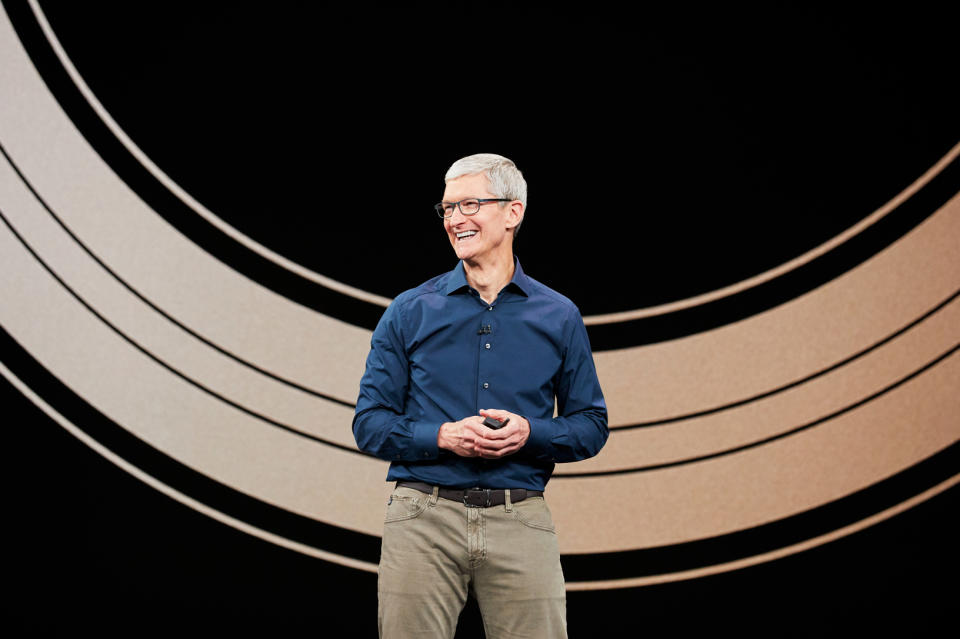Apple Might Be Making a Brilliant Move
Two of the three iPhones Apple (NASDAQ: AAPL) launched in the fall of 2018, the pricier iPhone XS and XS Max, have displays that use organic light-emitting diode (OLED) technology. The iPhone XR, the cheapest product in the company's current lineup, uses a technology known as liquid crystal display (LCD).
LCDs are generally cheaper to build than OLED-based screens, since LCDs have been around much longer and there are more LCD suppliers, allowing smartphone makers like Apple to take advantage of a robust competitive environment. The cost-effectiveness of LCDs is probably what drove Apple to choose the technology for the lowest-priced of its latest trio of iPhones.

Image source: Apple.
According to a recent report from The Wall Street Journal, however, Apple is "likely" to move away from LCD technology in the iPhones it intends to release in 2020. Here's why this move makes perfect business sense.
Two big issues with LCDs
Although the LCD Apple uses in the iPhone XR is color-accurate and bright, it's tough to escape the notion that LCDs are yesterday's news. They do suffer some distinct disadvantages relative to OLEDs, such as inferior contrast and slower pixel response times.
There's also another problem for LCDs, at least from Apple's perspective. Each pixel in the LCDs Apple uses is made up of three subpixels: one red, one green, one blue. The OLED screens Apple uses, by comparison, use what's known as a PenTile arrangement. In a nutshell, there are more green subpixels for each counted pixel than there are blue or red ones in such a display. According to DisplayMate, the iPhone XS Max has a pixel density of 458 pixels per inch, but while there are 458 green subpixels per inch on that display, there are only 324 red and blue subpixels.
Why is that important? Because OLED screens tend to have significantly higher display resolutions as a result of the way the pixels are counted compared to LCD with similar numbers of blue and red subpixels. And that makes it easier for smartphone manufacturers to market devices with OLED screens than those with LCDs.
Not convinced? Well, when the iPhone XR came out, there were a lot of complaints that Apple was selling customers a screen with a relatively low resolution screen compared with what the competition had to offer. Never mind that this screen delivered excellent image quality and brightness -- to some, Apple was trying to sell them a pricey phone with a subpar display because the 1,792-by-828 resolution was "too low."
By moving its entire lineup to OLED screens, Apple can market higher display resolutions across the board and also tout the advantages associated with OLED technology. Considering the tough time Apple is having in its current iPhone product cycle, anything to boost the appeal of its future devices would be welcome.
What about cost?
The good news for Apple and its shareholders is that when the time comes to ramp up production of the 2020 iPhones, the supply landscape for OLED screens should be quite favorable. Not only should Apple have Samsung (NASDAQOTH: SSNLF) to supply it with OLED screens, as it has over the past two product generations, but companies such as LG Display (NYSE: LPL) and China-based BOE Technology could be in the mix, too. There had been reports that LG Display would supply OLED screens for Apple's current lineup, but it's not clear if that happened.
The greater number of OLED screen suppliers, coupled with the fact that the technology should continue to mature between now and the launch of the 2020 iPhones, should mean Apple can comfortably adopt the technology across the entirety of its lineup when the time comes.
More From The Motley Fool
Ashraf Eassa has no position in any of the stocks mentioned. The Motley Fool owns shares of and recommends Apple. The Motley Fool has the following options: long January 2020 $150 calls on Apple and short January 2020 $155 calls on Apple. The Motley Fool has a disclosure policy.
